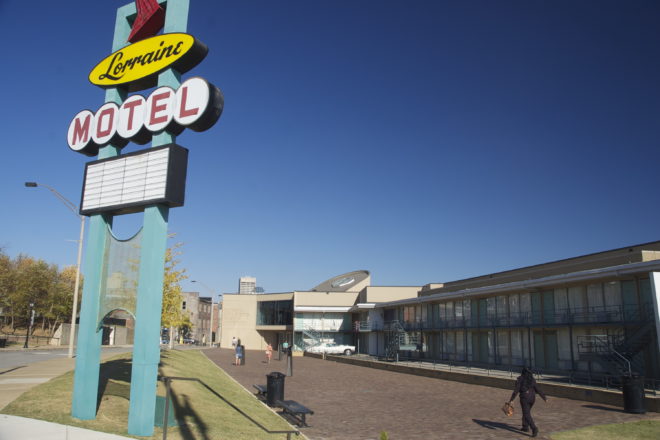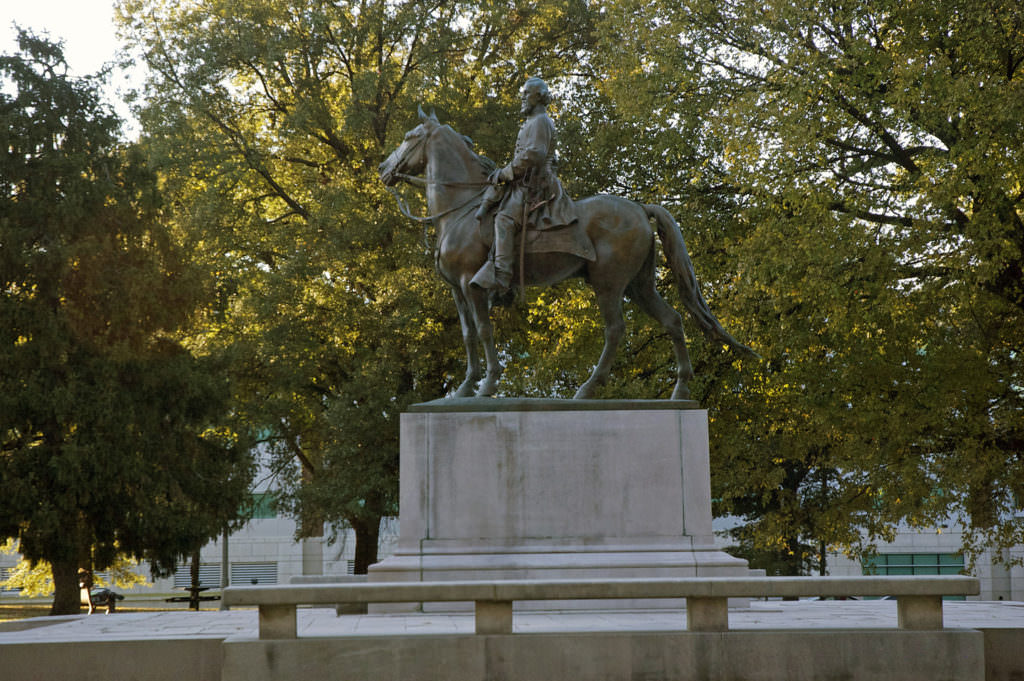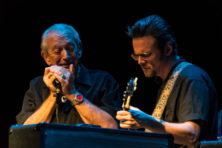Memphis on My Mind, Thanks to the DCA Winter Blues Fest
- Share
- Tweet
- Pin
- Share

Tourists stick out like sore thumbs in Memphis, stumbling around trying to read the Google maps on their telephones in the glare of the hot mid-South sun.
“Welcome to Memphis,” someone inevitably calls out, just to buck them up.
Thinking back on this year that is about to pass us by forever, it is easy to pinpoint my personal highlight.
It happened in November at the Door Community Auditorium during the first night of the first Winter Blues Fest, a three-day event that opened with a showing of Take Me to the River, a documentary about Memphis music and its musicians, from the soulful early ’60s at Stax to Snoop Dogg and a squirt named Lil P-Nut.
We weren’t far into the movie when my friend turned to me and said, “How about Memphis?”
Those three words changed my life.
Here’s the background: The fest was the first weekend of November and the weather was gorgeous, as if to mock the naming of the DCA’s first blues fest.
The election was a week away, and my friend, who works for a daily newspaper, had already booked vacation the week after the election. She typically takes vacation that week every year, and she usually goes somewhere warm, such as Mexico. We had been talking about both of us taking that week off, but I don’t want to vacate to Mexico or Florida or anywhere else where I’m just another dumb American tourist. I can’t do that kind of vacation.
So it was becoming something of a dilemma – I didn’t want to go to the places she likes to go, and I couldn’t think of anywhere I wanted to go. I’m just fine here in Door County where, someone once told me, every day is a vacation.
But I did not hesitate when during Take Me to the River she turned to me and said, “How about Memphis?”
“Yes!”
And that’s what we did. We planned a drive to Memphis along the Great River Road, but we lost the trail late at night in East Moline and ended up driving the rest of the way on tedious freeways, something I really wanted to avoid.
This is what I knew about Memphis before making the trip:
- It was named after the early Egyptian capital of Memphis.
- It has an amazing music history – Sun Records, Stax Records, Hi (Hat) Records, the blues, Beale Street.
- Elvis Presley called it home, and his home, Graceland, has become a shrine.
- Martin Luther King was assassinated in Memphis, and the place where he was killed has become a shrine and the National Civil Rights Museum.
- It’s known for BBQ.
That was the sad extent of my knowledge of this sprawling mid-South metropolis, and because this was truly a last-minute trip, I did not have time to do the research I would normally do before visiting a place, which is probably a good thing because had I known more, I might have had some reservations.
But my idea was to soak up its culture without bringing any preconceived notions to the table – a blank slate vacation. Fill me up with your reality, Memphis!
It was an eye opener. I learned Memphis was outwardly friendly and I liked it. Good food. Great catfish at Soul Fish. Friendly people. Excellent record stores.
There was a murder on Beale Street our first night in town, which ended my interest in spending time there. Anyway, on a quick daytime walk-through on our first day, Beale Street seemed to be the epitome of a tourist trap – a smaller Bourbon Street.
Murder, I learned, is always a theme in Memphis. They hit 200 murders for the year the week after our visit. As I write this on Dec. 26, 222 people have been murdered in Memphis in 2016.
Unbeknownst to either of us before our visit, Memphis has had the highest violent crime rate in the United States for a couple years running, with approximately 1,034 violent crimes per 100,000 people.
Would we have conducted ourselves differently had we known that? I don’t know.
Here is what I do know. We stayed in a hotel in downtown Memphis – on B.B. King Boulevard – and we walked a lot. I know we hit some places where white folk are rarely – if ever – seen, but we never encountered a problem, just some odd looks. Not the first time that has happened.

The burial place of General Nathan Bedford Forrest is beneath this statue of him in a city park. Photo by Jim Lundstrom.
We found the burial place of General Nathan Bedford Forrest and his wife in a city park, beneath a giant statue of Forrest astride his horse, with a small sign outlining the penalties for defacing a cemetery, which Forrest’s resting place is considered. In addition to being a key Southern figure in the Civil War, Forrest is also a founder of the Ku Klux Klan, so stands as a monument to white supremacy even today. Always the realist, Forrest pooh-poohed the popular narrative of the day that the war was being fought for states rights and/or Southern nationalism, Forrest, a wealthy former slave trader, once said, “If we ain’t fightin’ to keep slavery, then what the hell are we fightin’ for?”
We found the continuing influence of E.H. “Boss” Crump, with a major thoroughfare named for him, “Crump” graffiti everywhere, and a Crumpy’s Hot Wings franchise (founded by, no kidding, Donald Crump). Boss Crump ran Memphis for the first half of the 20th century. At one point late in his political career in the 1950s, he ran for mayor of Memphis with no intention of serving. After he won, he immediately turned the job over to a crony, which raised few eyebrows because Boss Crump had been handpicking mayors since 1915.

Photo by Jim Lundstrom.
I learned why there is a Danny Thomas Boulevard running through Memphis. I couldn’t think of a connection because I was pretty certain Danny Thomas was not from Memphis, but it turns out he helped to establish St. Jude’s Children’s Hospital in Memphis, a feat worthy of a boulevard.
We walked several times to Mulberry Street, where the Lorraine Motel used to be a home away from home for blacks traveling to Memphis, including the Rev. Martin Luther King and his entourage in April 1968, when he was assassinated. The façade of the hotel remains on Mulberry Street as part of the National Civil Rights Museum. We spent hours walking through the amazing exhibits and it wasn’t enough time to soak it all in.
And I saw a distinct separation between the races. With a 68 percent black population, and 80 percent of those blacks living in poverty, it’s not hard to imagine why Memphis struggles with crime.
My living room table is now filled with books about Memphis – the 1866 massacre that left 46 Memphis blacks dead, Nathan Bedford Forrest and the Civil War, the Crump crony years, plus several of Robert Gordon’s books on Memphis music history.
So I am grateful to the DCA’s Winter Blues Fest for opening my eyes to all this Memphis history. Yes, it’s the history of a place I only visited for a short week, but it’s also our collective American history.




